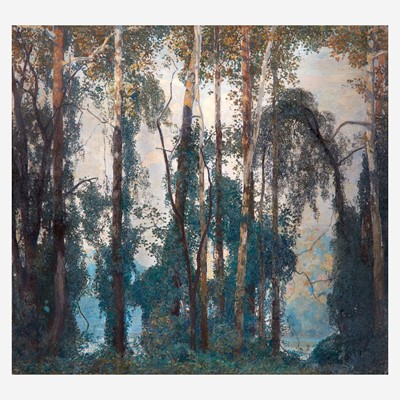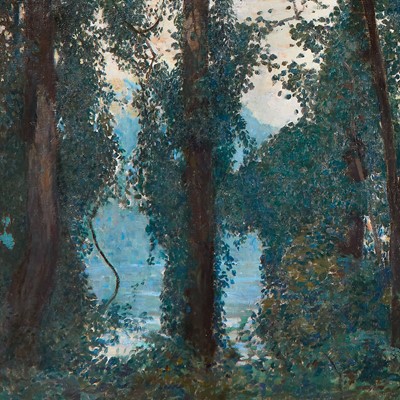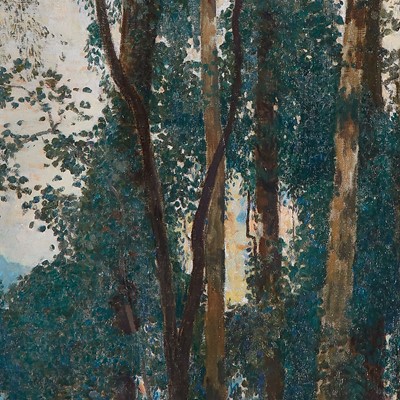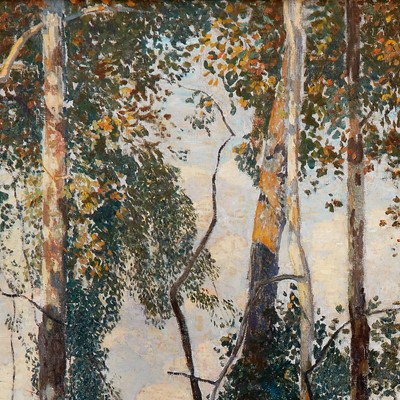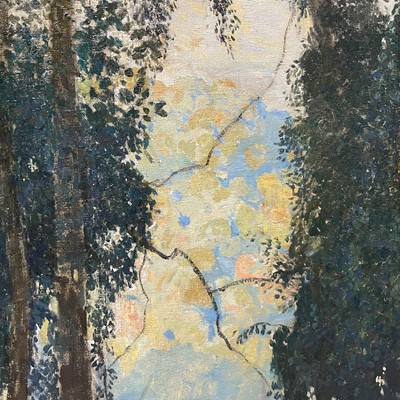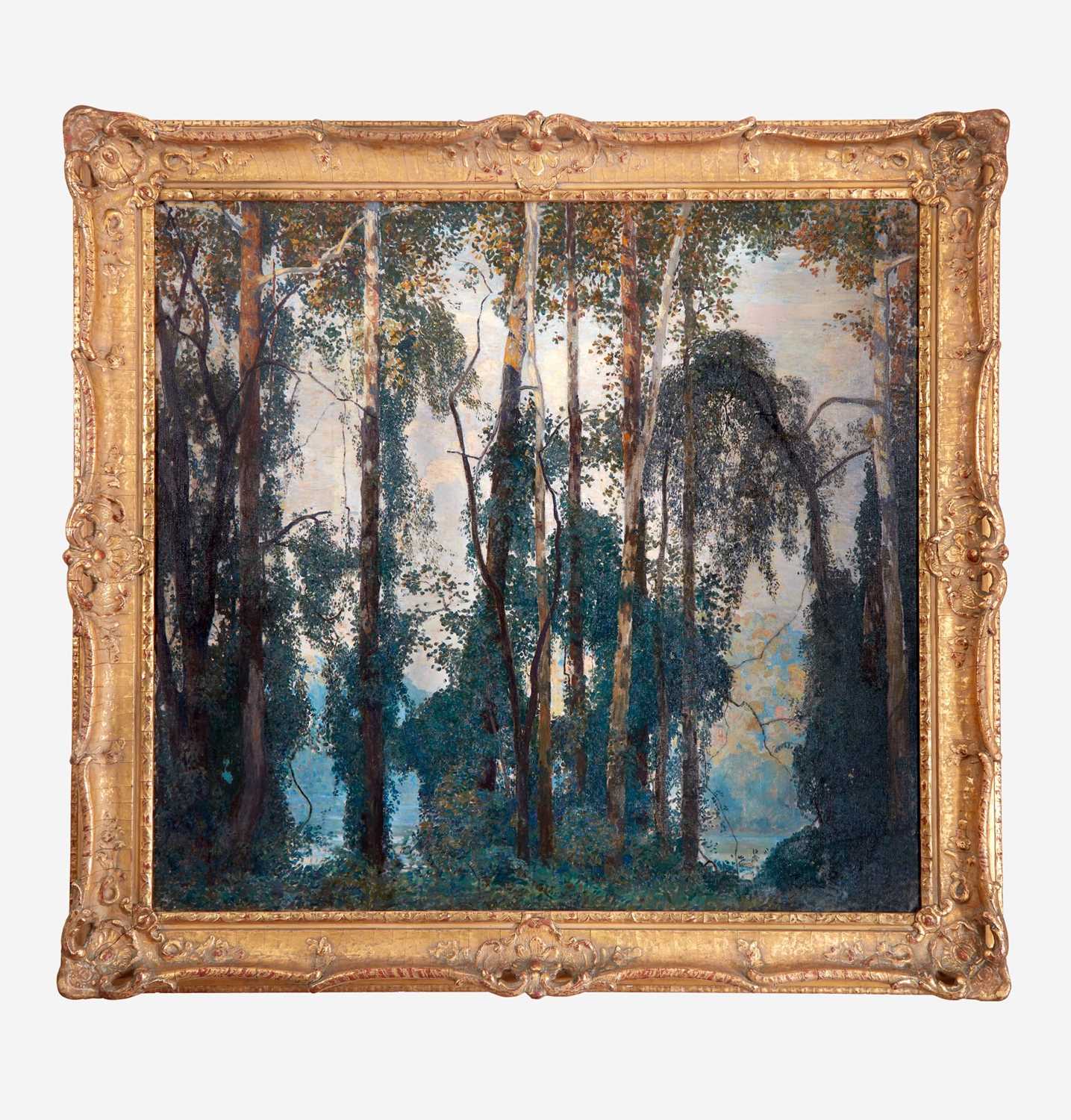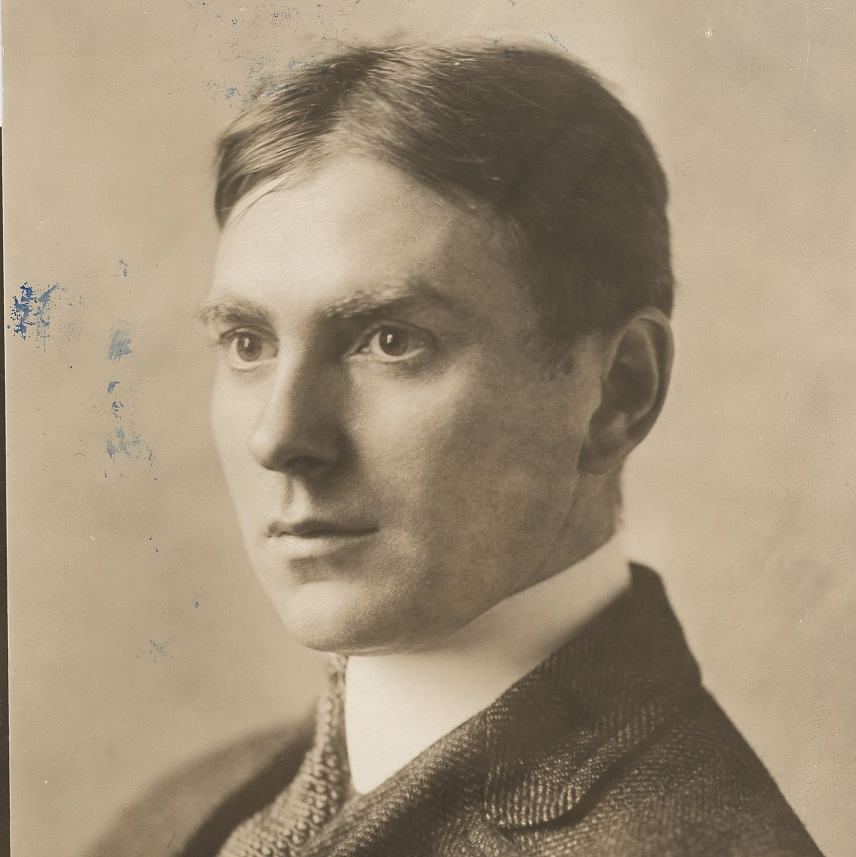December 5, 2021 14:00 EST
American Art and Pennsylvania Impressionists Featuring the Collection of Virginia and Stuart Peltz
94
Daniel Garber (American, 1880–1958)
Sycamores
Signed 'Daniel Garber' bottom right, oil on canvas
52 1/8 x 56 1/8 in. (132.4 x 142.6cm)
Executed in September 1923.
In its original exhibition Frederick Harer frame.
Provenance
Sold for $390,600
Estimated at $300,000 - $500,000
Signed 'Daniel Garber' bottom right, oil on canvas
52 1/8 x 56 1/8 in. (132.4 x 142.6cm)
Executed in September 1923.
In its original exhibition Frederick Harer frame.
Provenance
Exhibited
"Ninth Exhibition of Contemporary American Oil Paintings," The Corcoran Gallery of Art, Washington D.C., December 16, 1923-January 20, 1924, no. 147.
"One Hundred Nineteenth Annual Exhibition," Pennsylvania Academy of the Fine Arts, Philadelphia, Pennsylvania, February 3-March 23, 1924, no. 358.
"Twenty-Third Annual International Exhibition of Paintings," Carnegie Institute, Pittsburgh, Pennsylvania, April 24-June 15, 1924, no. 66.
"Nineteenth Annual Exhibition of Paintings by American Artists," St. Louis Museum of Fine Arts (now The Saint Louis Art Museum), September 15-October 25, 1925, no. 30.
"An Exhibition of Contemporary American Paintings and French Etchings and Lithographs," Art Gallery of Toronto, Toronto, Canada, January 1927, no. 50.
"Paintings which Have Received Prize Awards in International Exhibitions at Carnegie Institute," Carnegie Institute, Pittsburgh, Pennsylvania, February 5-March 10, 1935, no. 47.
"Twentieth Century American Painting and Sculpture from Philadelphia Private Collections," Pennsylvania Academy of the Fine Arts, Philadelphia, Pennsylvania, October 25-November 30, 1958, no. 361.
Literature
"Foreigners Win Most of the Glory at This Year's International Show in Pittsburgh," in Art News 22, no. 30, May 3, 1924, p. 1 (illustrated).
Leila Meichlin, "Twenty-Third Annual International Exhibition, Carnegie Institute, Pittsburgh," in American Magazine of Art 15, no. 6, June 1924, pp. 308-309 (illustrated).
"Notes" in The Studio, London 88, no. 376, July 15, 1924, p. 55 (illustrated).
Gertrude Nason Carvers, "Sycamores" in International Studio 81, no. 339, August 1925, 390 (illustrated).
The Buffalo Artist's Register I, 1926, p. 20 (illustrated)
"Sycamores by Daniel Garber" in Academy Notes, Albright Art Gallery, 20, 1926 (special no.), p. 9 (illustrated).
The Academy Blue Book, Buffalo Fine Arts Academy, Albright Art Gallery, Buffalo, 1931, pp. 55, 63, 97 (illustrated).
Kathleen A. Foster, Daniel Garber: 1880-1958, Pennsylvania Academy of the Fine Arts, Philadelphia, 1980, p. 12.
Vicky A. Clark, et al., International Ecounters: The Carnegie International and Contemporary Art, 1896-1996, Carnegie Museum of Art, Pittsburgh, 1996, p. 159.
Lance Humphries, Daniel Garber: Catalogue Raisonné, Hollis Taggart Galleries, New York, 2006. Vol. II, p. 170, P 466 (illustrated).
Note
By 1920, Daniel Garber enjoyed a strong reputation and seemed in full control of his style, fame, and already-prolific career. At the time, he was mostly known and celebrated for his richly-colored and lyrical depictions of the Delaware River Valley, and the gentle rolling hills of Bucks County, which he captured en plein air, near his famous cottage, Cuttalossa. The decade was particularly rich for the artist, who sought out to experiment with different approaches to painting, and relentlessly captured nearby locales (often the same one) in different formats, styles and palette. Completed when the artist was merely 40 years old, Sycamores is one of Garber’s signature paintings. It takes place along the infamous Delaware River at Smithtown, a small hamlet which no longer exists. The village was nestled at the confluence of Smithtown Creek, in between Point Pleasant and Frenchtown, a location which Garber had explored on multiple occasions, and which will continue to show up in his later paintings.
Sycamores is one of the last large-scale canvases completed by Garber, and marked the artist’s triumphant return to the highly decorative (and critically successful) series of canvases he produced in the previous decade, such as Towering Trees (1911), The Wilderness (1912) and Hawk’s Nest (1917). In each painting, the viewer is confronted with a line of tall, intensely vertical tree trunks set along the river, whose tops are cut off by the upper edge of the canvas, and through which one can spot a barely perceptible landscape on the horizon. Contrary to such earlier works however, Sycamores stands out as a true modern, 1920s composition. The use of bold and explosive colors, paired with the broad, yet painstaking application of paint highly contrasts with the artist’s previous muted and monochromatic works, and reveals Garber’s true talent, and full maturity. It also departs from the overall stasis of the earlier works, and in fact bedazzles by its incredibly vitality and dynamism, as revealed by the trees, which seem to march across the canvas in an unequal, yet gentle rhythm. The relatively low vantage point chosen by Garber allows him to flatten the different planes of the composition, specifically the foreground and the background, which seem completely merged together. The slender, distorted trees (inherent qualities to the sycamore, which explains Garber’s fascination with this tree and its repeated appearance in the artist’s oeuvre) contribute to the immense verticality of the scene. Instead of framing the composition however, the trees act as a screen, a lattice which purposely obstructs the view, thus contributing to the famous “tapestry effect” associated with Garber’s technique.
Forced into recess in the shaded foreground, and forever kept away from the sunny beyond, the viewer is left with no other choice than contemplating the incredible painterly surface -a masterful mix of quick dabs of paint, and precise contouring. The subtle passage from shade to light is beautifully captured by Garber, who juxtaposes dark hues of paint next to brighter tones so as to suggest the dotted summer light, which beautifully reverberates against the striking white barks of the sycamores, and pierces through the purply canopy of the trees. Through color, Garber also underlines the intricate forms of the trees and of the vines’ overall seductive pattern, whose leaves are meticulously, and singularly detailed – a true act of bravura. As a result, the painting becomes less about the view and more about the surface of the canvas, and the act of painting itself: the trees are used as a tool to underline the painting’s materiality, and showcase the elegance of the lines, which contribute to the overall (and voluntary) flatness of the work. Sycamores is a distinctive Garberesque canvas, and differs from many other compositions executed by fellow artists of the New Hope School. Contrary to Redfield’s quintessential snow scenes for example, the viewer is not invited inside the picture plane, and drawn to a narrative. The work is deliberately complex, and hard to penetrate, as if the real goal was not for the viewer to be within the scene, but only to “regard and appreciate [its] artfulness” from afar. In that sense, Garber positions himself as an intermediary, whose mission is to reveal and transmit to his audience the beauty he witnesses. It echoes Garber’s philosophy who, according to Lance Humphries, “saw himself as an observer of life, rather than a maker of it.” Sycamores thus becomes imbued with a poetic sensibility, if not spirituality, that is specific to the artist’s own personality and views on nature and mankind.
The landscape acts as a sacred space, one evidently devoid of any form of humanity, a pure, untouched and untamed Garden of Eden. As the artist explained himself to a reporter in 1923, Sycamores features a “rare, delicately patterned lace.” Through this opening in the darkness “comes a glow of sunlight.” “And that to me is life,” said Garber as he turned the canvas about. “We sit back in the shade and shadow and look through the interstices into the clear sunlight of field and mountains beyond. Perhaps this is why this painting was so interesting as I worked on it. It expressed something more than the ordinary landscape – a bit of feeling about living.” As such, Sycamores can be analyzed as a commentary, and in fact a denial of Bucks County’s rapidly growing population and industrialism, which Garber abhorred as it meant nature had to recess, and concede its power to man – the antithesis of his beliefs.
The Boston art dealer Richard Vose, a longtime friend of Garber, always thought the artist worked best on a large scale. The immersive experience provided by Sycamores surely supports Vose’s opinion. But the painting’s large scale also reflects the artist’s ambitions at the time, as revealed by the personal history of the work. Garber clearly favored Sycamores and found it important as it was featured in no less than seven major shows between 1923 and the artist’s death, in 1958. In fact, after presenting the painting at the Corcoran Gallery in Washington D.C. in 1923 and at The Pennsylvania Academy of the Fine Arts in Philadelphia in 1924, Sycamores was awarded the third prize of $500 and a bronze medal at the Carnegie Institute’s annual international exhibition in 1924. The award was the most significant recognition Garber ever received from this institution. It was also the first time an American artist won a prize at the exhibition. In fact, the work was so popular that it was bought on site by the Albright Art Gallery in Buffalo, New York at the time of the exhibition, ensuring the artist “a load of publicity” as he revealed himself to his cousin, and which continued as the canvas toured in Saint Louis, and Toronto in 1924 and 1927. At the time of its purchase by the Albright Art Gallery in Buffalo, many critics considered Sycamores to be a typical American landscape, the true vision and the right direction that American artists ought to follow. A Frenchman specifically, declared upon seeing the canvas in Buffalo, that American artists painted “American landscapes that the artists of no other country [could] compare with. They obtain the spirit of this country. When they paint French landscapes there are like the work of Frenchmen, but not so good; when they paint their own country they have seldom been equaled.” Such a statement echoes Guy Pène du Bois’ famous commentary on the New Hope School and the painting of Edward Redfield specifically, which the critic revered as “our first truly national expression.”
Through its impressive size, its rich palette and locale, Sycamores therefore not only embodies Garber’s impressive talent; it also symbolizes the emergence and the new hope for American Art and landscape painting in general.

